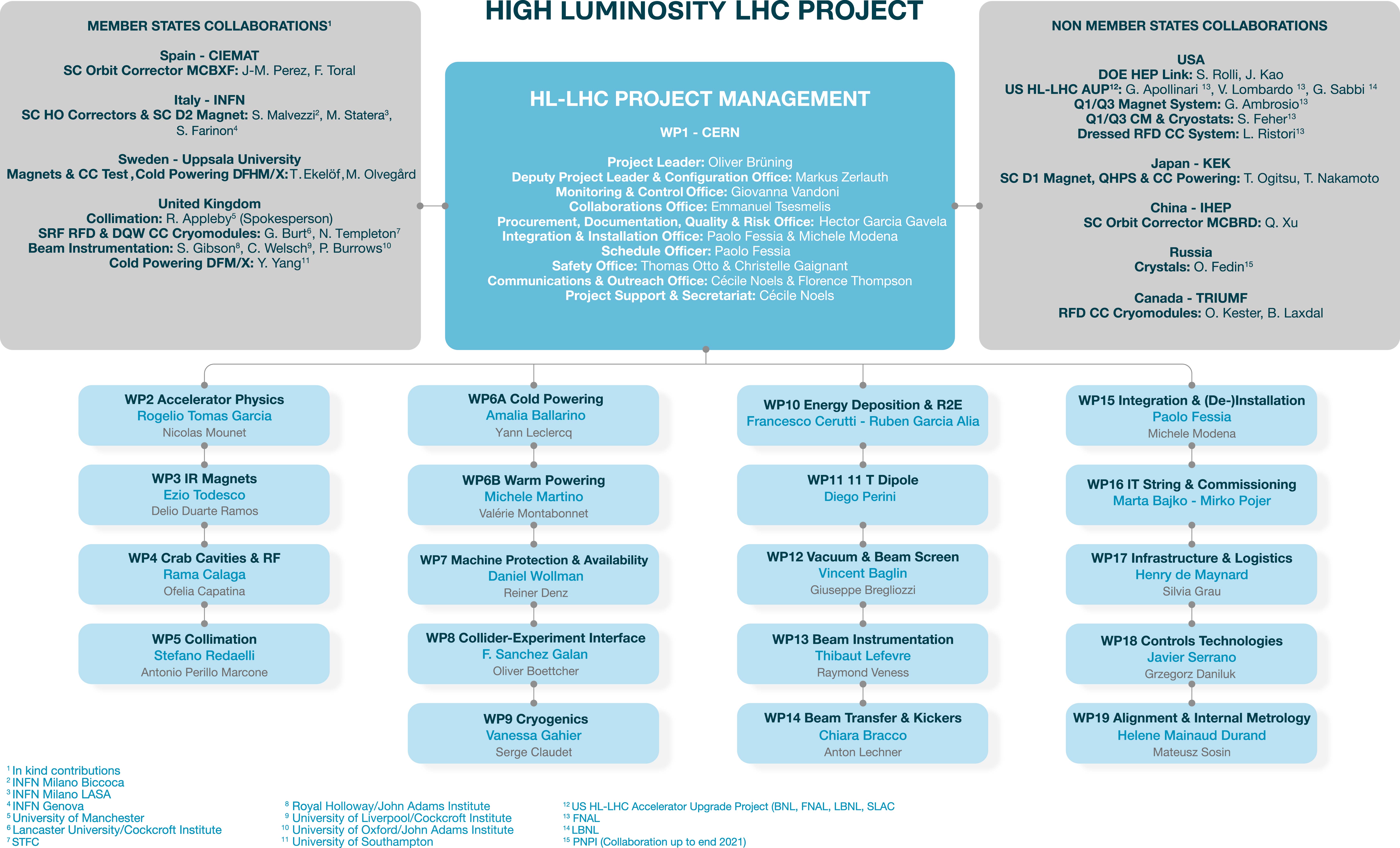The HL-LHC project | High Luminosity LHC Project (original) (raw)
The Large Hadron Collider (LHC) at CERN, which is situated at the Franco-Swiss border near Geneva, is the largest instrument ever designed and built for scientific research. It has been exploring the high-energy frontier since 2010 and attracts a global user-community of more than 7,000 scientists spanning more than 60 countries. Since March 2010, LHC has been producing proton-proton collisions at 7, and then at 8 TeV centre-of-mass energy, a factor of 4 greater than the previous record (held by Tevatron at the Fermi National Laboratory, USA). On 4th July 2012 the LHC experiments, ATLAS and CMS, announced the first major discovery: the long-sought Higgs boson, the cornerstone of the Standard Model (SM) of particle physics. This announcement has been heralded by scientists, as well as by the media, as a giant leap in the understanding of our world and the origin of the universe.
After a two-year long shutdown, the LHC restarted delivering proton-proton collisions at a new record of 13 TeV centre-of-mass energy in spring 2015. In order to further increase its discovery potential around the mid-2020's, LHC would eventually need an upgrade to increase the total number of collisions by a factor of 10. A more powerful LHC will provide more accurate measurements of new particles and enable the observation of rare processes that occur below the current sensitivity level. This will make it possible to detect rare events not previously witnessed, and increase our understanding of the energy frontier. How this upgrade can be technically achieved is at the heart of the High Luminosity LHC project (HL-LHC), of which the design phase was supported in part by funding from the Seventh Framework Programme (FP7) of the European Commission, the HiLumi LHC Design Study.
High Luminosity LHC Project Organization (last update October 2024)
With the upgrade, the LHC will push the limits of human knowledge, enabling physicists to go beyond the Standard Model and its Higgs boson. For example, the mysterious dark matter and the world of supersymmetry are just among the long-awaited mysteries that the LHC may unveil. Thanks to the LHC, Europe has decisively regained world leadership in High Energy Physics, a key sector of knowledge and technology. The LHC can act as catalyst for a global effort unrivalled by other branches of science, as signified by the fact that some critical components of the accelerator have been primarily developed by the US program LARP.
But upgrading such a large scale, complex piece of machinery is a challenging endeavor that will take a decade to complete. The process hinges on a number of innovative technologies, which the HL-LHC project is exploring. This extraordinary technical enterprise will rely on a combination of cutting-edge Nb-Ti and Nb3Sn superconducting magnets, compact and ultraprecise superconducting radio-frequency cavities for beam rotation, as well as 100-m-long, high-power superconducting links with zero energy dissipation. In addition, the higher luminosities will impose unprecedented demands on vacuum, cryogenics and machine protection, and will require new concepts for collimation and diagnostics, advanced modelling for the intense beams and novel schemes of beam crossing to maximize the physics output of the collisions.
Following the approval of HL-LHC as priority project in the EU Strategy Report for High Energy Physics and the approval of its budget by CERN Council (Medium Term Plan 2015), this major upgrade is now in full swing of implementation together with its companion upgrade programmes of the LHC injectors upgrade (LIU) and detectors (ALICE, ATLAS, CMS, LHCb).
LHC/ HL-LHC Plan (last update October 2024)

